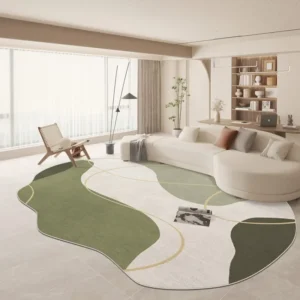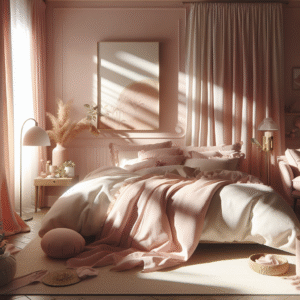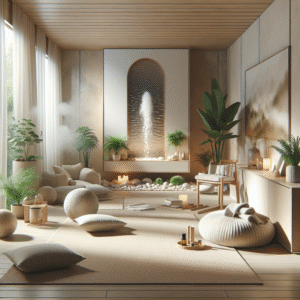Mastering the Art of Texture: Unveiling the Secrets to Luxurious Layering in Design
Have you ever walked into a room and felt instantly at ease, all because of the perfect combination of textures? This is no coincidence. Mastering the art of texture in design can transform your space from mundane to magnificent. Understanding how to layer different materials and colors, while balancing tactile qualities, is essential for achieving that luxurious look.
In this comprehensive guide, you’ll learn the secrets behind luxurious layering, discover different types of textures, and find actionable steps to incorporate them into your designs. By the end of this article, you’ll be equipped to enhance your spaces through intentional texture layering.
Article Roadmap
1. Understanding Texture in Design
Texture adds depth and dimension to any design. It encompasses the feel and appearance of surfaces—how something looks and how it makes you feel when you touch it. Both physical texture (how a surface feels) and visual texture (how a surface appears) play crucial roles in the impact of a space.
The Role of Texture
Texture can evoke emotions, balance design elements, and create focal points. Understanding how to manipulate texture allows designers to lead a viewer’s eye through a space.
2. Types of Textures
Textures can be categorized into several types. Exploring these types will help you make informed choices in your design projects.
Natural Textures
Elements like wood, stone, and plants. These textures bring authenticity and a sense of calm.
Man-Made Textures
Materials like glass, metals, and plastics. These textures can add elegance and sophistication.
Soft Textures
Fabrics such as velvet, silk, and wool. Soft textures offer comfort and warmth.
Visual Textures
Patterns and designs that create an illusion of depth or texture, such as wallpapers or tiles.
3. Layering Techniques for Luxurious Effects
Layering textures is an art. Mastering it will help you create an inviting, balanced, and luxurious aesthetic in any design.
Finding Balance
The key to effective layering is balance. Combining varying textures can lead to visual harmony.
Layering Soft with Hard
Pairing soft textures with hard ones can create striking coffee table set-ups or layered bedding that feels inviting yet sleek.
Layering Colors
Complementary color textures enhance the overall aesthetic while maintaining a cohesive look.
Using Patterns Wisely
When incorporating patterns, remember that they can compete for attention. Use them as a secondary layer to enhance rather than overpower.
Case Study: Successful Layering in Action
Consider a luxury hotel lobby that combines polished marble floors with plush velvet seating and soft linen drapes. Each texture attracts attention while providing comfort and sophistication.
4. Implementation Guide
The implementation of layered textures can be broken down into actionable steps.
Step 1: Identify the Purpose of Your Space
Understanding how you want the space to function will guide your choices in texture.
Step 2: Select Your Color Palette
Harmonizing colors can unify varying textures. Choose a palette that reflects the mood you wish to create.
Step 3: Start with Focal Points
Identify key areas in your design to build your texture layers around.
Step 4: Experiment with Samples
Using samples can help visualize how different textures will work together. Don’t be afraid to mix and match!
5. Frequently Asked Questions
What are some common mistakes in texture layering?
One common mistake is overloading a space with too many textures, making it feel cluttered.
How can I choose textures for a small space?
Focus on lighter textures and colors to create an airy feel, and consider fewer, bold textures to avoid overwhelming the space.
Are there specific textures for outdoor spaces?
Yes! Natural materials like stone, wood, and durable fabrics are excellent choices for outdoor layering.
Can I mix different styles in one design?
Absolutely! Mixing styles can create depth and interest, just ensure a common color palette ties everything together.
Content Disclaimer
Information provided in this article is for educational purposes only. For specific design advice, consulting with a professional is recommended.
Categories
- Accent Walls & Ceilings (18)
- Art Curation & Gallery (32)
- Bedding Style Trends (42)
- Bedroom Makeover (37)
- Bohemian & Eclectic Styles (17)
- DIY & Budget-Friendly Decor (16)
- Eco-Friendly Design (18)
- Furniture Care (36)
- Home Decor & Design Ideas (108)
- Home Wellness Spaces (17)
- Integrated Outdoor Living (16)
- Kids and Nursery Decor (17)
- Living Room Decor (37)
- Minimalist & Japandi Style (20)
- Mix & Match Techniques (36)
- Modern & Contemporary Design (16)
- Rug Sizing & Placement (36)
- Seasonal Home Decor (39)
- Small Space Solutions (21)
- Wall Art & Painting Tips (39)
Recent Comments
Archives
Product Gallery
-
 Large Area Green Rugs for Bedroom Nordic Living Room Decoration Shaped Carpet Irregular Plush Lounge Rug Home Thick Washable Mat Rated 5.00 out of 5$56.95 – $359.13Price range: $56.95 through $359.13
Large Area Green Rugs for Bedroom Nordic Living Room Decoration Shaped Carpet Irregular Plush Lounge Rug Home Thick Washable Mat Rated 5.00 out of 5$56.95 – $359.13Price range: $56.95 through $359.13 -
 Nordic Style Rugs for Bedroom Morandi Living Room Decoration Carpet Large Area Geometry Lounge Rug Home Cloakroom Non-slip Mat Rated 5.00 out of 5$40.93 – $620.00Price range: $40.93 through $620.00
Nordic Style Rugs for Bedroom Morandi Living Room Decoration Carpet Large Area Geometry Lounge Rug Home Cloakroom Non-slip Mat Rated 5.00 out of 5$40.93 – $620.00Price range: $40.93 through $620.00 -
 Irregular Shapes Living Room Decoration Carpet Modern Style Rugs for Bedroom Home Thicken Plush Rug Fluffy Soft Lounge Floor Mat Rated 4.75 out of 5$57.89 – $360.12Price range: $57.89 through $360.12
Irregular Shapes Living Room Decoration Carpet Modern Style Rugs for Bedroom Home Thicken Plush Rug Fluffy Soft Lounge Floor Mat Rated 4.75 out of 5$57.89 – $360.12Price range: $57.89 through $360.12















